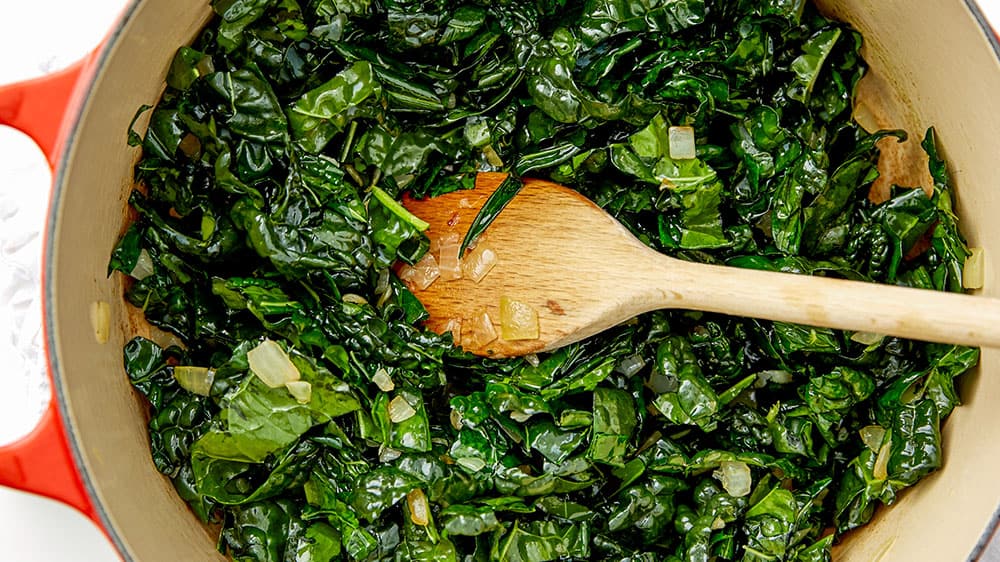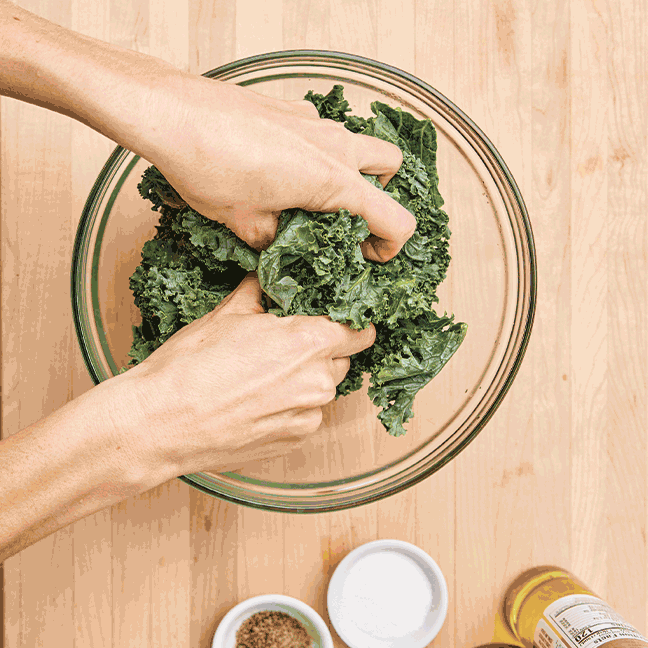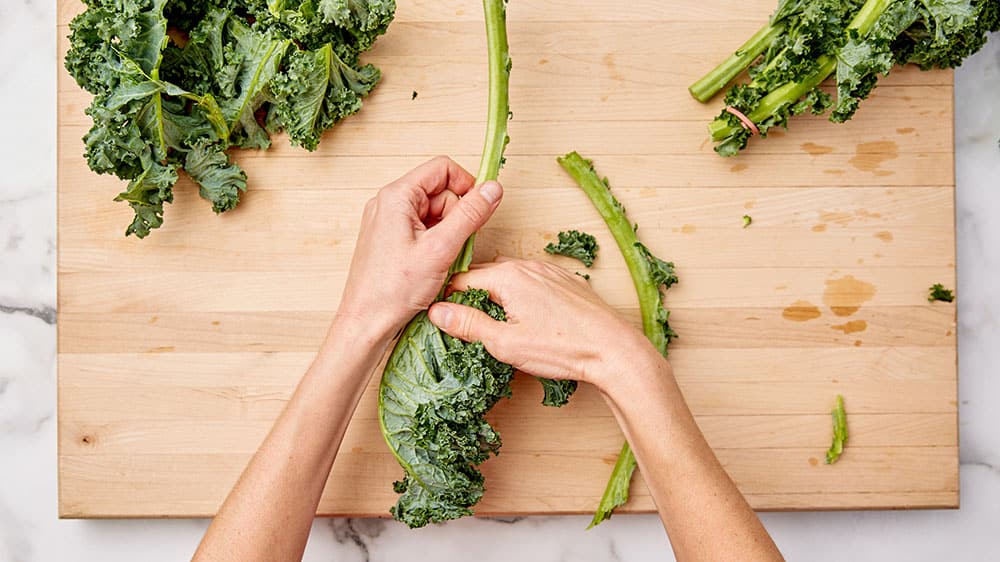(function() {
document.addEventListener('DOMContentLoaded', function() {
var componentMetadata = JSON.parse('\x7b\x22componentName\x22\x3a\x22ChannelLinks_8918a218-1030-4c2b-87de-605f1d7de656\x22,\x22deferOptions\x22\x3a\x7b\x22deferComponent\x22\x3afalse,\x22deferType\x22\x3a\x22None\x22,\x22deferId\x22\x3a\x22r3f3044501a6c40058af0552ebbd3f4d2\x22,\x22deferredContainerId\x22\x3a\x22\x2fchannelLinks\x22,\x22deferredContainerView\x22\x3anull\x7d,\x22viewName\x22\x3a\x22ChannelLinks\x22\x7d');
var configuration = {};
var moduleName = 'channelLinks';
var isVueModule = true;
GeneralMills.PandoSites.RegisterControlInstance(moduleName, configuration, componentMetadata, isVueModule)
});
})();
(function() {
document.addEventListener('DOMContentLoaded', function() {
var componentMetadata = JSON.parse('\x7b\x22componentName\x22\x3a\x22ActionToolbar_59e5fa31-dc57-46ea-93d1-265650a760f0\x22,\x22deferOptions\x22\x3a\x7b\x22deferComponent\x22\x3atrue,\x22deferType\x22\x3a\x22OnDemand\x22,\x22deferId\x22\x3a\x22r50fcad61b5eb45788dfc0719584c3e31\x22,\x22deferredContainerId\x22\x3a\x22\x2ffloatingActionToolbar\x2ffloatingActionToolbar_interop\x22,\x22deferredContainerView\x22\x3a\x22InteropDeferWrapper\x22\x7d,\x22viewName\x22\x3a\x22ActionToolbar\x22\x7d');
var configuration = {"contentId":"46a7ba04-8978-4db4-8127-0ceed0701b83","toolbarSettings":{"id":"59e5fa31-dc57-46ea-93d1-265650a760f0","regAction":"FAVORITE","eSourceCode":11275,"namePassedToEvents":"ArticleStandardLongFormToolbar","buttons":[{"addFavoriteErrorMessage":"Sorry, something went wrong. Please save again.","removeFavoriteErrorMessage":"Error occurred while removing from favorites","regAction":"FAVORITE","eSourceCode":11275,"isCurrentUserAnonymous":false,"isFavoriteItem":false,"id":"16a29701-2b75-4d9a-aa9c-860376da50d7","allowedForAnonymousUsers":false,"type":"Favorite","displayName":"Save","namePassedToEvents":"Favorite","cssClassName":"atButtonFavorite","privacyOptOutMessage":"\u003cdiv class=\u0027privacyMessage\u0027\u003e\n\u003ch3\u003eThis feature is not available with your current cookie settings.\u003c/h3\u003e\n\u003cp\u003eYou can \u003ca href=\u0027#\u0027 data-show-preference-center=\u00271\u0027\u003eupdate your privacy settings\u003c/a\u003e to enable this content. Please enable “Functional Cookies” to use this feature.\u003c/p\u003e\n\u003c/div\u003e","showPrivacyOptOutMessage":false},{"providerName":"pinterest","providerNamePassedToEvents":"Pinterest","shareUrlFormat":"//pinterest.com/pin/create/link/?url={0}","id":"c18cf08e-e436-4cd0-a180-1bafb15369a6","allowedForAnonymousUsers":true,"type":"Social","displayName":"Pinterest","namePassedToEvents":"Pinterest","cssClassName":"atButtonPinterest","privacyOptOutMessage":"\u003cdiv class=\u0027privacyMessage\u0027\u003e\n\u003ch3\u003eThis feature is not available with your current cookie settings.\u003c/h3\u003e\n\u003cp\u003eYou can \u003ca href=\u0027#\u0027 data-show-preference-center=\u00271\u0027\u003eupdate your privacy settings\u003c/a\u003e to enable this content. Please enable “Functional Cookies” to use this feature.\u003c/p\u003e\n\u003c/div\u003e","showPrivacyOptOutMessage":false},{"templateId":"13bdd311-4300-4fb8-9d78-9cbaf98f5578","dialogHeading":"Email Article","emailCode":"BC_ContentEmail","dialogSettings":{"cancelButtonText":"Cancel","copyToSenderLabel":"Send a Copy to Myself","emailAddressesLabel":"* Email Address(es)","emailInstructionText":"Separate email addresses with commas","fromText":"From:","privacyPolicyText":"\u003cp\u003e\u0026copy;2024 General Mills, Inc. All Rights Reserved. This information will only be used to send an email to your friend(s) and will not be saved. Please read our \u003ca rel=\u0022noopener noreferrer\u0022 rel=\u0022noopener noreferrer\u0022 href=\u0022http://www.generalmills.com/company/privacy-policies/privacy-policy-us\u0022 target=\u0022_blank\u0022 shape=\u0022rect\u0022\u003ePrivacy Policy\u003c/a\u003e.\u003c/p\u003e","requiredFieldText":"* Required","sendButtonText":"Send","senderEmailAddressLabel":"* Your Email Address","senderFirstNameLabel":"* Your First Name","sendToText":"Send To:"},"id":"be9422a3-85a8-4c31-86f5-e171255bb89d","allowedForAnonymousUsers":true,"type":"Email","displayName":"Email","namePassedToEvents":"Email","cssClassName":"atButtonEmail","privacyOptOutMessage":"\u003cdiv class=\u0027privacyMessage\u0027\u003e\n\u003ch3\u003eThis feature is not available with your current cookie settings.\u003c/h3\u003e\n\u003cp\u003eYou can \u003ca href=\u0027#\u0027 data-show-preference-center=\u00271\u0027\u003eupdate your privacy settings\u003c/a\u003e to enable this content. Please enable “Functional Cookies” to use this feature.\u003c/p\u003e\n\u003c/div\u003e","showPrivacyOptOutMessage":false},{"providerName":"facebook","providerNamePassedToEvents":"Facebook","shareUrlFormat":"//facebook.com/sharer/sharer.php?u={0}","id":"6c3f442d-6ffe-460f-8360-b02b122d326c","allowedForAnonymousUsers":true,"type":"Social","displayName":"Facebook","namePassedToEvents":"Facebook","cssClassName":"atButtonFacebook","privacyOptOutMessage":"\u003cdiv class=\u0027privacyMessage\u0027\u003e\n\u003ch3\u003eThis feature is not available with your current cookie settings.\u003c/h3\u003e\n\u003cp\u003eYou can \u003ca href=\u0027#\u0027 data-show-preference-center=\u00271\u0027\u003eupdate your privacy settings\u003c/a\u003e to enable this content. Please enable “Functional Cookies” to use this feature.\u003c/p\u003e\n\u003c/div\u003e","showPrivacyOptOutMessage":false},{"layoutParameter":"p%3d1","id":"de022929-4416-4bc9-ab3c-ae5711d562bf","allowedForAnonymousUsers":true,"type":"Print","displayName":"Print","namePassedToEvents":"Print","cssClassName":"atButtonPrint","privacyOptOutMessage":"\u003cdiv class=\u0027privacyMessage\u0027\u003e\n\u003ch3\u003eThis feature is not available with your current cookie settings.\u003c/h3\u003e\n\u003cp\u003eYou can \u003ca href=\u0027#\u0027 data-show-preference-center=\u00271\u0027\u003eupdate your privacy settings\u003c/a\u003e to enable this content. Please enable “Functional Cookies” to use this feature.\u003c/p\u003e\n\u003c/div\u003e","showPrivacyOptOutMessage":false}],"isSticky":true},"userSettings":{"isCurrentUserAnonymous":true,"isFavoriteItem":false},"pageAttributes":{"url":"https%3a%2f%2fwww.bettycrocker.com%2fhow-to%2fhow-to-cook-kale","contentId":"46a7ba04-8978-4db4-8127-0ceed0701b83"},"recaptchaPublicKey":"6LfU_icUAAAAALSqSjRg5hqZwbPr1b8k-_80a_S_"};
var moduleName = 'actionToolbar';
var isVueModule = true;
GeneralMills.PandoSites.RegisterControlInstance(moduleName, configuration, componentMetadata, isVueModule)
});
})();
How to Cook Curly Kale
This lovely, curly head of greens is the crunchiest of the kale family. For this reason, we prefer it cooked. Here are a couple of ways to do that.
- Roast it to make toasty, salty, crispy kale chips that disintegrate in your mouth just like an ultra-thin potato chip—but with a few more healthy benefits. Dress up your kale chips with parmesan, ginger and sesame, honey and sriracha or even tahini.
- Sauté it with aromatics, like garlic and onions, add dash of broth and finish it off with a drizzle of flavored oil—anything from sesame to walnut would be delicious. A skillet of sautéed kale makes an excellent side dish and lets you skip the obligatory green salad!
- Slice it thin and make it into a slaw. After all, kale is a member of the cabbage family and won’t wilt when dressed, just soften slightly. Try it for yourself with this bright fresh recipe for Gluten-Free Kale and Apple Slaw. Or for a heartier salad that’s perfect for a work lunch, make this Gluten-Free Quinoa Tabbouleh with Kale—tabbouleh is a Middle Eastern salad typically made with bulgur, fresh herbs and vegetables, but this version substitutes quinoa for the bulgur and adds in kale.

Where to find it? Due to its popularity, curly-leaf kale is widely available year-round. It’s typically sold in bunches. You’ll find it among the romaine and other greens in the produce section of your grocery store. Sometimes, it comes washed and chopped in bags or clamshells.
How to Make the Most of Redbor Kale
With leaves shaped just like curly kale but colored a deep red-purple, redbor kale will add some color to your plate. Its texture and flavor is quite similar to the green variety, so you can use it as described above. Combine it with curly-leaf when you want a little color variation or let it star on its own for an extra pretty dish.
Where to find it? In the produce section of your grocery store, you’re likely to find bunches of redbor kale alongside the curly and lacinato (see below) kale. It’s not quite as common as curly-leaf and lacinato (see below for more on this variety) but still widely available, especially at large grocery stores and health foods coops.
How to Perfect Red Russian Kale
Similarly showy, Red Russian Kale has dark green leaves with magenta and purple stems and veins. It’s sweet and mild with softer leaves. You might not need to destem, but it’s best to taste it before making the call. It can be eaten raw or cooked—though it won’t take long to cook—so prepare it according to any of the methods described in this article.
Where to find it? This type of kale is not as common as curly leaf, lacinato and baby kale. You’re most likely to find it when it’s in season locally. Look for it on either end of your growing season, since it’s a cold-weather crop. If you live in the Northern part of the country, spring and fall are when it’s most likely to be available at your grocery store or farmers market. If you find it, we recommend snapping it up—it’s the sweetest and possibly most versatile of the whole bunch.
How to Make Lacinato Kale Amazing
Also called Tuscan or Dinosaur Kale, this variety has long, narrow leaves with a bumpy, reptilian texture (hence the nickname “dinosaur”). It is slightly softer than its cousin, curly kale, which makes it easy to cook with—though it can be eaten raw too. Here’s what we like to do with lacinato kale.
- Stir it into a soup, stew, pasta or risotto, and you’ll find lacinato wilts nicely, without getting soggy. Its texture ends up tender but toothsome, but the best part of adding these green leaves to your pot is that they enhance the flavor of your dish. As the leaves wilt, they absorb tons of flavor from a brothy soup or hot pasta making each bite more vibrant and delicious.
- Massage it to make a salad that can survive a night in the fridge without turning soggy—even after being dressed. It’s a simple two- to three-minute task that’s exactly what it sounds like: Kneading the leaves to make them more tender; you’ll know they’re ready when they’ve turned a darker shade of green. Massage the leaves on their own or take this opportunity to boost their flavor by massaging them with lemon, olive oil and any other seasonings you desire. Note, you can also massage curly and redbor kale for salad, but for best results you’ll want to take the latter approach of massaging with lemon or another acid that can help break down the fibrous leaves.

Where to find it? In the produce section of your grocery store, lacinato kale is usually sold in bunches among the romaine and other greens. Sometimes, it’s also available washed and prepped in bags or clamshells. It’s probably second to curly-leaf kale in popularity but definitely widely available year-round.
How to Treat Baby Kale Right
Prior to maturity, kale leaves are smaller and more tender. They’re oval-shaped and look similar to baby spinach leaves, except their leaves have a scalloped edge—the beginning of their curly trim. The texture is not as soft as baby spinach but not as crunchy as mature kale. These leaves are great eaten raw—no massaging necessary. You can also cook them, though be aware that won’t take long. Here’s how we like to use baby kale.
- Raw, it makes a great salad. Use it in place of any type of salad green, and you won’t be disappointed. These baby greens have a nice texture that won’t be too crunchy or bitter, even for children and those who have more sensitive palates.
- Roast it for a nice addition to your sheet-pan dinner. It only takes about 8 minutes and lets you skip making a salad. Just remember to add the kale at the end, after potatoes and other ingredients have cooked most of the way through. Give it a try in this recipe for Sheet-Pan Kielbasa and Vegetables.

Where to find it? In the produce section of your grocery store, baby kale is typically found among the bags and clamshells of salad greens. It’s also widely available year-round.
How to Prep and Store Kale
Properly stored, kale will last three to five days in the refrigerator. If you have time to prep it when you get home from the grocery store, you might find yourself more likely to throw it into whatever you’re cooking (speaking from our personal experiences), but there’s nothing wrong with washing right before use, either.
- Destem it: Unless you’re eating baby kale or struck the jackpot and found a bunch of Red Russian kale, you’ll want to separate leaves from the woody rib running through their center. You’ll find this is easily done either by hand or with a knife. Fold the leaf in half lengthwise and gently peel or cut alongside the rib. Since kale can be oversized, it’s often easier to destem, and even chop, before attempting to wash.
Expert Tip: Wondering what to do with the ribs? Throw them in stock, chop them up, sauté with other vegetables, throw them in your smoothie or even in your salad for some crunch.
- Clean it: Kale’s large and wrinkled leaves tend to capture the dirt, so it’s important to wash this green thoroughly. If you own a salad spinner, soak the leaves, then drain and spin. If you don’t, soak leaves in a large bowl and dry them on a clean dish towel.
Expert Tip: If you don’t have a salad spinner, you can shake some of the excess water off your greens with this nifty trick: Pile kale leaves in the center of a clean dish cloth, gather the corners to make a tight bundle, then shake your bundle over the bathtub. Be prepared to catch a little spray if you try this method.
- Store it: After drying as thoroughly as possible, wrap leaves in a clean dish towel or paper towels and store in a resealable, plastic bag.
Expert Tip: Take care to remove as much air as possible from the bag. This will help your leaves to stay fresh longer.

How to Freeze Kale
Whether you’re a gardener with a bumper crop or just got a good deal at the grocery store, preserve some kale in the freezer, where it will keep for three to six months. Here’s how to prepare kale for freezing:
- Set a large pot of water to boil.
- When water has reached a boil, add leaves. Cook briefly, just until their color turns a brighter shade of green.
- Remove greens from water and let dry on a clean kitchen towel.
- Flash freeze dry leaves by placing on a sheet pan. Once leaves have frozen through—it won’t take long—remove from pan and store in resealable plastic bag.
Frozen kale is great for adding to smoothies and soups. Another option, in lieu of freezing, use your blanched leaves in a warm salad.
So there you have it: Everything you need to know about cooking and eating this misunderstood green. Next time you’re looking for a quick way to add some great texture, good flavor and better-for-you benefits to whatever’s for dinner, count on kale!
(function() {
document.addEventListener('DOMContentLoaded', function() {
var componentMetadata = JSON.parse('\x7b\x22componentName\x22\x3a\x22NewsletterCTA_b9911a56-3a0d-4b1c-8521-df6c10ce048a\x22,\x22deferOptions\x22\x3a\x7b\x22deferComponent\x22\x3atrue,\x22deferType\x22\x3a\x22OnDemand\x22,\x22deferId\x22\x3a\x22re49e57f4ec42401cbbabbfa44a3decc7\x22,\x22deferredContainerId\x22\x3a\x22\x2fprimaryColumn\x2finteropInlineNewsletterCta\x22,\x22deferredContainerView\x22\x3a\x22InteropDeferWrapper\x22\x7d,\x22viewName\x22\x3a\x22NewsletterCTA\x22\x7d');
var configuration = {"unsubscribedNewsletters":[{"listId":"1e34a555-89d1-45f0-8f07-b3ae6b01c03c","thumbnailImageUrl":"/-/media/GMI/Core-Sites/BC/Images/Shared/myaccount/newsletters/BC_Thumb157x157.png?sc_lang=en","previewUrl":"https://morpheus3.idpk.net/email_sends/9111/preview","name":"Betty\u0027s Email","isPromo":false}],"settings":{"anonymousCopy":"Ready to Be Inspired?","anonymousDescriptionCopy":"We know you’ll love our daily tips, trends and tasty recipes sent right to your inbox.","anonymousThankYouCopy":"\u003cp\u003eThanks! Your first email is on its way.\u003c/p\u003e\n","anonymousThankYouDescriptionCopy":"\u003cp\u003e\u003cspan\u003eNow that you\u0026rsquo;re signed up, create an account on BettyCrocker.com to save your favorite recipes, learn more about special promotions and get inspired through Betty\u0026rsquo;s expert tips.\u003c/span\u003e\u003c/p\u003e","anonymousButtonText":"Sign up now","anonymousEmailInvalidErrorText":"Please enter a valid email address.","anonymousSubscribeErrorText":"We encountered an error while signing you up. Please try again.","anonymousEmailAddressPlaceholderText":"Enter your email address","anonymousEmailAddressLabel":"Email Address","anonymousLegalCopy":"By signing up, you accept our\u0026nbsp;\u003ca rel=\u0022noopener noreferrer\u0022 href=\u0022https://www.generalmills.com/privacy-security/us-english-privacy-policy\u0022 target=\u0022_blank\u0022\u003e\u003cspan style=\u0022text-decoration: underline;\u0022\u003ePrivacy Policy\u003c/span\u003e\u003c/a\u003e\u0026nbsp;and agree that your information may be used across our\u0026nbsp;\u003ca rel=\u0022noopener noreferrer\u0022 href=\u0022https://www.generalmills.com/food-we-make/brands\u0022 target=\u0022_blank\u0022\u003e\u003cspan style=\u0022text-decoration: underline;\u0022\u003efamily of brands\u003c/span\u003e.\u003c/a\u003e","requiredFieldText":"","standardSmallImageUrl":"/-/media/GMI/Core-Sites/BC/Images/BC/seasonal/2021_Christmas/ncta_bg.png","standardLargeImageUrl":"/-/media/GMI/Core-Sites/BC/Images/BC/seasonal/2021_Christmas/ncta_bg.png","backgroundColor":"#333333","accentColor":"","registrationUrl":"/register/reg-fp?RegAction=SUBSCRIBERUPGRADE\u0026esrc=11275\u0026returnUrl=%2fhow-to%2fhow-to-cook-kale","registrationLinkText":"Join free!","enableExpandedFields":false,"hideForSessionCookieExpiration":0,"ctaType":"StandardAnonymous","location":"Inline","userState":"Anonymous","sourceCodeOverride":0}};
var moduleName = 'newsletterCta';
var isVueModule = true;
GeneralMills.PandoSites.RegisterControlInstance(moduleName, configuration, componentMetadata, isVueModule)
});
})();
(function() {
document.addEventListener('DOMContentLoaded', function() {
var componentMetadata = JSON.parse('\x7b\x22componentName\x22\x3a\x22ConsumerGeneratedContent_46a7ba04-8978-4db4-8127-0ceed0701b83\x22,\x22deferOptions\x22\x3a\x7b\x22deferComponent\x22\x3atrue,\x22deferType\x22\x3a\x22OnDemand\x22,\x22deferId\x22\x3a\x22r2eac8a8be5f5455fa391cbd3a8db67dc\x22,\x22deferredContainerId\x22\x3a\x22\x2fratingReview\x2finteropRatingReview\x22,\x22deferredContainerView\x22\x3a\x22InteropDeferWrapper\x22\x7d,\x22viewName\x22\x3a\x22ConsumerGeneratedContent\x22\x7d');
var configuration = {"loaderScript":"https://apps.bazaarvoice.com/deployments/bettycrocker/main_site/production/en_US/bv.js","type":"QuestionAndAnswer","language":"en","includeRatings":false};
var moduleName = 'consumerGeneratedContent';
var isVueModule = true;
GeneralMills.PandoSites.RegisterControlInstance(moduleName, configuration, componentMetadata, isVueModule)
});
})();